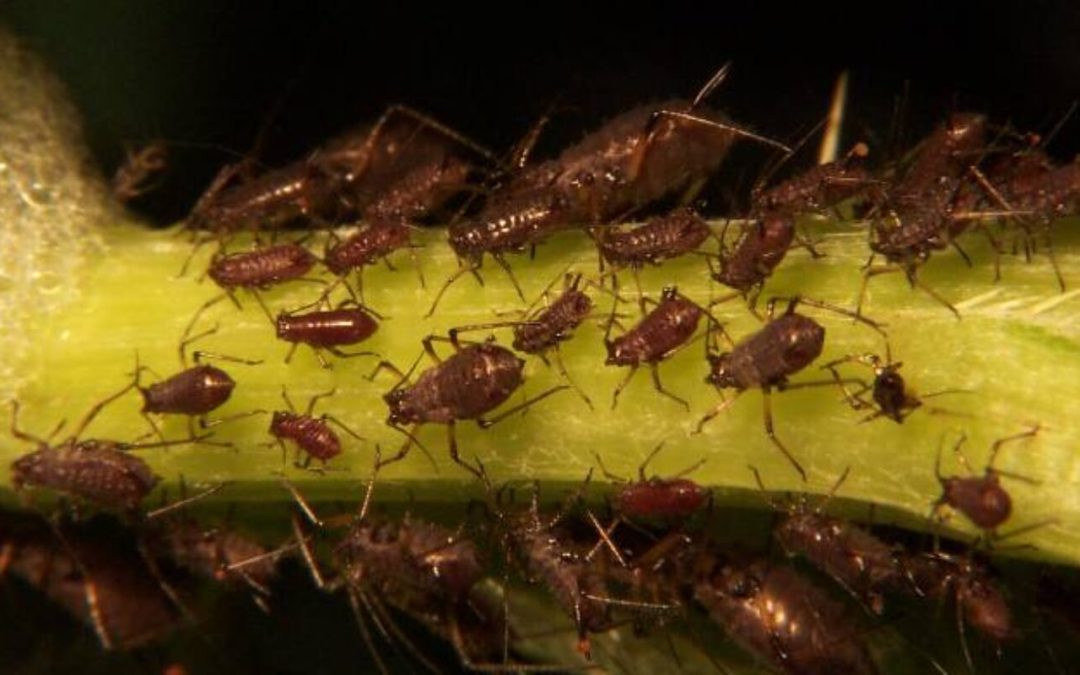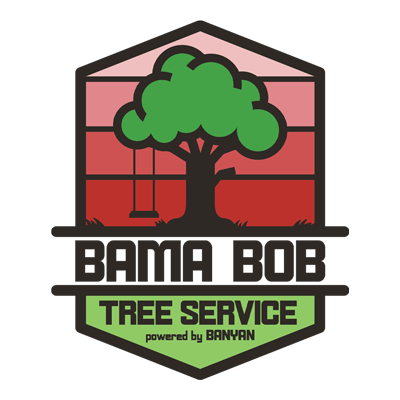Aphids are an all-too-common pest in gardens and landscapes. Also known as greenflies and blackflies, they feast on sap.
Because of their small size, however, aphids often go unnoticed. When fully grown, aphids are only about one-eighth of an inch long.
While you can’t easily spot them from afar, there are other ways to tell if large trees are infected with aphids.
Sticky Leaves
If you believe aphids have infested a large tree in your landscape, look at the leaves to see if they are sticky.
As previously mentioned, these otherwise small pests feast on sap. They’ll suck the sap the sap out of leaves while leaving behind a sticky residue in their wake.
Black Fungi
Another possible sign of an aphid infestation in large trees is the presence of black fungi.
As the sap sits on the tree’s leaves, it encourages the growth of black fungi. Fungal spores in the air will fall on the sap, at which point the fungi will begin to spread.
Sap Below the Tree
You should check around the base of the tree – particularly the area of the ground directly below the canopy – to see if there’s sap present.
When aphids feast on a tree’s sap, some of the sap will inevitably fall to the ground below. Therefore, the presence of sap below a tree may suggest that it’s infested with aphids.
Yellow Spots
The presence of yellow spots on a tree’s leaves may also indicate an aphid infestation.
Most aphids are yellow, so when they infest a tree, they look like yellow spots. When viewed up closed, you may even notice them moving. Regardless, if you see groups of yellow spots on a tree’s leaves, there’s a good chance that it’s suffering from an aphid infestation.
Curled Leaves
Perhaps one of the most common signs of an aphid infestation in large trees is curled leaves.
As aphids feast on a tree’s sap, they’ll chew through its leaves. Over time, this may cause the leaves to curl upward or downward.
Galls
Finally, you should inspect large trees in your landscape to see if they contain galls.
Like many other garden pests, aphids lay eggs to reproduce. When aphids lay eggs inside or on a tree, the tree may respond by producing large growths known as galls. The galls themselves are typically harmless, but they are indicative of an infestation.
Aphids reproduce so quickly—we’re talking several generations created in a single season—that by the time you notice the insects on your plants, you’re likely in the midst of a full-blown infestation. Thankfully, though, homeowners can often combat the pests before major damage occurs. Here’s how to get rid of aphids and keep them from returning to wreck your plants in the future.
STEP 1: Removal
If you discover aphids your garden, follow one of these three methods to get rid of them.
Hose them down.
If you spot a few aphids on your plants, the minor infestation can be successfully banished with a strong stream of water from the hose. Run water all over the plant, making sure to target the underside of each leaf. Repeat this process every few days until you’ve successfully eliminated all aphids, which could take up to two weeks.
Spray leaves with DIY insecticidal soap.
Waging war with larger numbers of aphids? Make a homemade insecticidal soap, a low-toxicity bug control solution that will desiccate the soft bodies and kill the aphids without doing harm to your plants. Simply mix a few teaspoons of liquid dish soap with one quart of water, then spray or wipe the solution onto the leaves, stems, and buds of the plant. (Don’t forget: These bugs like to hide beneath leaves, so take care to thoroughly coat the underside of the leaves, too.) Repeat the process every two or three days for the next few weeks, until you no longer notice aphids on the plant.
Use a systemic pesticide.
If your aphid infestation is substantial and not swayed by insecticidal soap, you may need to kill them with a systemic pesticide. Consider using a product containing Imidacloprid, which will kill aphids when ingested but won’t harm pollinators like bees, hummingbirds, and butterflies (view example Imidacloprid-containg insecticide on Amazon). Mix and apply according to the manufacturer’s directions.
STEP 2: Prevention
After eradicating aphids from your garden, take measures to prevent the pests from returning. Here are three ways to deter aphids from your plants.
Introduce beneficial bugs.
Several species of bugs—like lady beetles, lacewings, and parasitic wasps—happily munch on aphids. If you provide a habitat of flowering ground covers (especially varieties like cosmos and stonecrop that supply nectar throughout the growing season), you’ll draw them to the garden and successfully keep the aphid population in check. Homeowners can also purchase these natural predators via mail-order. If you introduce beneficial bugs to your garden, do not use broad-spectrum pesticide—it will kill them, too!
Apply dormant oil.
If aphids have settled on your fruit trees, apply dormant oil (a commercial oil that controls pests during the off-season) in mid- to late-winter to kill any eggs that are overwintering (view dormant oil on Amazon). Mix the dormant oil with water in a garden sprayer, according to the directions on the packaging, and apply to the leaves, stems, branches, and trunk of the tree. Reapply per the manufacturer’s directions.
Choose neighboring plants strategically.
Oregano, chive, sage, garlic, leeks, onions, and other plants with strong scents can deter aphids. Plant these in the areas of your garden where aphids have been a problem. In addition, you can grow plants that attract aphids, like calendula and nasturtium, on the opposite side of your property; they may draw aphids away from the affected area. Companion planting is a long-term prevention measure, but it could help your aphid population diminish significantly over several seasons.
Bama Bob’s tree Service offers tree removal, tree trimming, and stump grinding.
If we can help with any of your tree care needs give us a call at 256-457-9484


